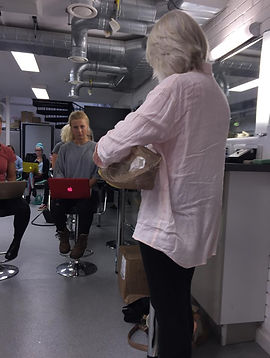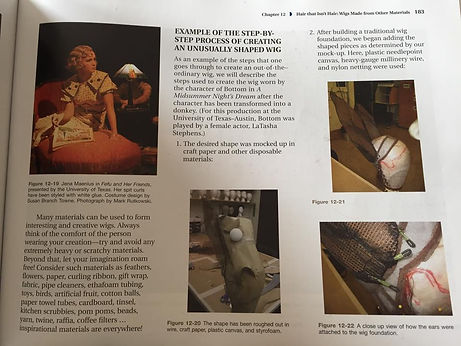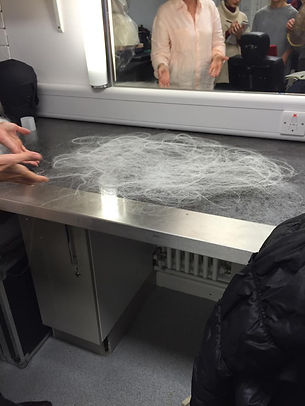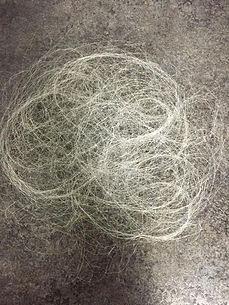Lucie Minty
Specialist Practice
Hair Sculptures
Frames:
It is much easier for the frame to have a rounded top to hide the hair than it is to have a pointed top. With a pointed top you have the issue of where to hide the hair.
Padding, is really important when making a hair sculpture. It shouldn't be uncomfortable for the model. Consider what padding to use and/or how you could use the models hair to pad out the wire.
The weight of the hair sculpture is something really important to consider.
When designing the hair sculpture it's really important to consider what materials you are going to use to make it as you don't want to use anything which is going to be heavy for the model.
Think about what you are going to cover the hair sculpture with: Netting, foundation net, tut tut net etc.
If use cal foundation net to cover the base you could knot into it and add wefts.
Examples:











Here is an example of a frame for a hair sculpture. The frame appeared to be made out of thick garden wire which had foundation net sewn around it. Using foundation net to cover the frame can be really useful because allows you to sew hair wefts and knott into the sculpture. The bottom of this hair frame is padded with foam, for more confort either fabric or hair could also be used to wrapp around the bottom.
This is another example of a hair sculpture with a unique frame. This hair sculpture was complete so was covered in hair and padding so was really difficult to see the frame to see how this piece had been constructed but from what I could see appeared to be made from wire and netting.
Below is an example of the hair structure in context:






Hübner, M. and Ehmann, S. (2010). Hair’em Scare'em. Berlin: Die Gestalten Verlag.
Hübner, M. and Ehmann, S. (2010). Hair’em Scare'em. Berlin: Die Gestalten Verlag.
Hübner, M. and Ehmann, S. (2010). Hair’em Scare'em. Berlin: Die Gestalten Verlag.
Hübner, M. and Ehmann, S. (2010). Hair’em Scare'em. Berlin: Die Gestalten Verlag.
Hübner, M. and Ehmann, S. (2010). Hair’em Scare'em. Berlin: Die Gestalten Verlag.
Above are some examples of some really intresting hair sculptures used within fashion/editorial work. I love the different shapes created and the way hair has been manipulated around the shapes. It appears that the texture of the hair has a really big effect on the final look. Taking into consideration what type of hair is going to be used for the hair sculpture is really important when designing.


Ruskai, M. and Lowery, A. (2013). Wig Making and Styling: A Complete Guide for Theatre & Film. United States: Focal Press.
Ruskai, M. and Lowery, A. (2013). Wig Making and Styling: A Complete Guide for Theatre & Film. United States: Focal Press.


Ruskai, M. and Lowery, A. (2013). Wig Making and Styling: A Complete Guide for Theatre & Film. United States: Focal Press.
Ruskai, M. and Lowery, A. (2013). Wig Making and Styling: A Complete Guide for Theatre & Film. United States: Focal Press.
This book was really helpful in going into deatail about hair structures used in Theature and Film. It showed a variety of frames used in industry and how they were constructed. This book also displayed a variety of different materials which the hair frames were made out of and processes into making them.



Hair Lace Demonstartion
We were demonstrated a way to manipulate synthetic hair which has a paper like texture which can foldent, bend and be cut into different shapes using just synthetic hair and strong hold hair spray.
Below is my small sample practicing this technique, which is stuck into my sketch book.



